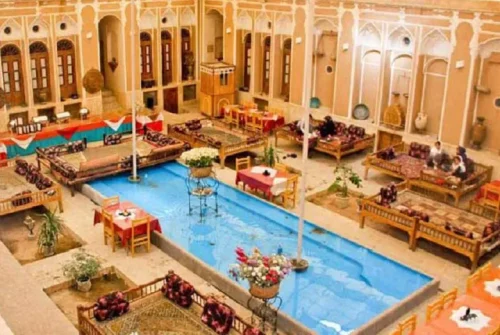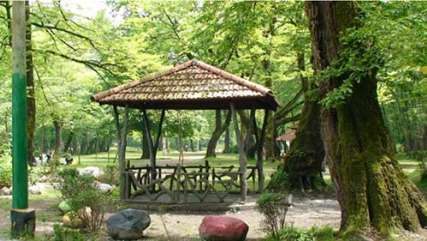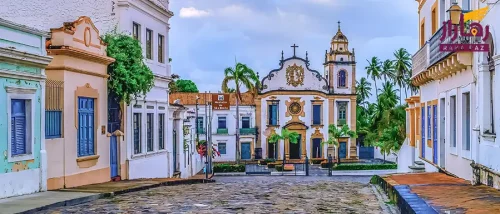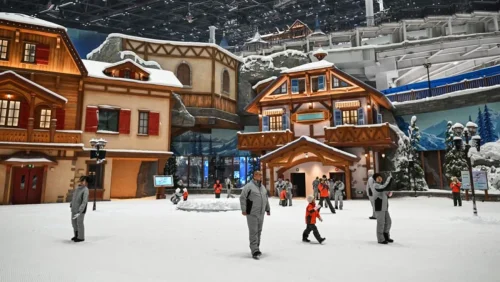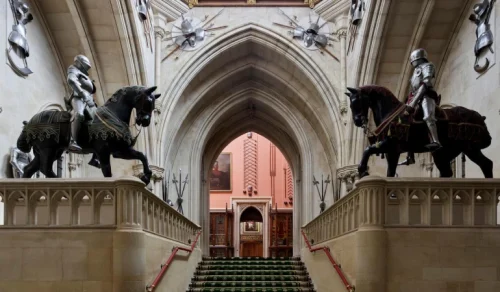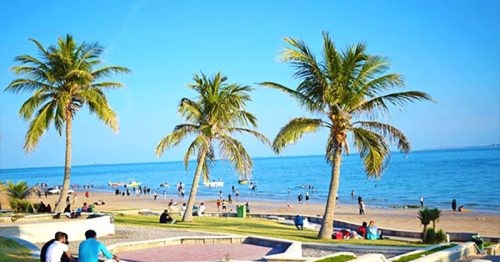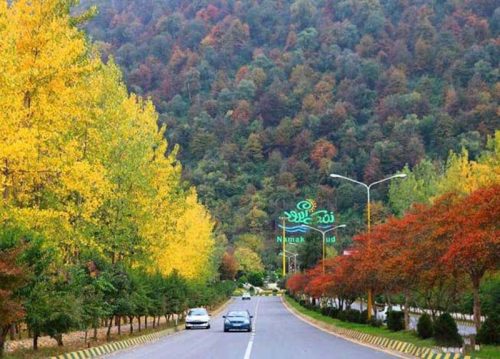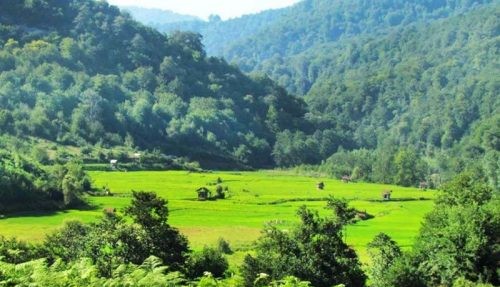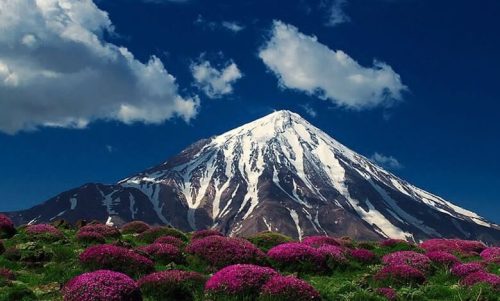Sahebgharanieh Palace Tehran: A Symbol of Qajar Architecture
The Sahebgharanieh Palace in Tehran is one of the most significant symbols of Qajar architecture, serving as a historical witness in the heart of the city. This meticulously and artfully constructed palace reflects the grandeur and magnificence of Qajar architecture, and today it remains a valuable memento from that historical era. Visitors from around the world flock to see the beauty of the Sahebgharanieh Palace in Tehran and enjoy its unique design.
Currently, connecting with reputable sites for more information on these historical landmarks is important. For instance, you can easily book your tickets through Iran Charter and enjoy a journey to historical destinations. Additionally, the Alibaba magazine explores the details and history of the Sahebgharanieh Palace in Tehran in a comprehensive article, which you can access on the Iran Charter Blog.
For a unique historical tourism experience, it is recommended to use the services of Iran Charter. This company offers the best travel services and ensures that your visit to historical places like Sahebgharanieh Palace Tehran becomes one of the most memorable experiences for you.
History of Sahebqaraniyeh Palace in Tehran: A Symbol of Naser al-Din Shah Qajar Era
The Sahebqaraniyeh Palace in Tehran is one of the most prominent architectural works of the Qajar period, with a rich and remarkable history. Built in the early 19th century by the order of Naser al-Din Shah, it served as the official residence of the Qajar royal family. The history of its construction and development reflects the Shah’s interest in Islamic art and architecture. This palace is recognized not only as a royal residence but also as a symbol of the power and grandeur of the Qajar era.
Over the years, Sahebqaraniyeh Palace has witnessed many changes and transformations. From its initial construction to various historical periods, this palace has played a significant role in Tehran’s history. Numerous historical events, including the Constitutional Revolution and other political transformations, have significantly impacted its structure and preservation. Despite all these changes, Sahebqaraniyeh Palace has remained an important historical monument and holds a special place in the heart of Tehran.
Today, Sahebqaraniyeh Palace is recognized as a major tourist attraction in Tehran, attracting visitors from around the world to see this historic site. Its rich history and unique architecture have made it one of Iran’s standout cultural and historical landmarks, worthy of visiting and studying.
Architecture of Sahebqaraniyeh Palace in the Qajar Era: Beauty and Unique Features
The architecture of Sahebqaraniyeh Palace in Tehran is a stunning reflection of Qajar architecture, designed with traditional elements and innovations of its time. Built using high-quality materials and state-of-the-art construction techniques, it inspired many other historical buildings in Iran. The interior and exterior designs of the palace showcase a meticulous attention to detail, utilizing geometric and floral designs, exemplifying the beauty of Islamic architecture.
One of the standout features of the architecture of Sahebqaraniyeh Palace is the use of exquisite tilework and golden decorations, contributing to the building’s unique beauty. Additionally, its expansive gardens and courtyards create a serene and pleasant environment for residents and visitors. The interior design of the palace, with its large rooms and beautiful decorations, creates an opulent and luxurious space, reflecting the majesty and splendor of the Qajar era.
The architecture of Sahebqaraniyeh Palace was not only aesthetically pleasing but also highly functional. Advanced heating and cooling systems of the time ensured the comfort of its inhabitants, and the building’s structure was highly resistant and durable. This blend of beauty and functionality has made the Sahebqaraniyeh Palace one of the masterpieces of Qajar architecture.
Importance of Sahebqaraniyeh Palace in Tehran and Iran’s History
Sahebqaraniyeh Palace in Tehran plays a significant role as a prominent historical building in the history of Tehran and Iran. It was used not only as the residence of the Qajar royal family but also as a venue for official ceremonies and important historical events. The palace’s importance in Iran’s history is evident in its role in various political and social transformations.
Throughout different historical periods, Sahebqaraniyeh Palace has witnessed many important changes. From the Constitutional Revolution to other political shifts, this building has always been at the center of significant historical events. This historical importance has made Sahebqaraniyeh Palace one of Iran’s cultural and historical symbols, enhancing its value for preservation.
Furthermore, as an influential architectural work, Sahebqaraniyeh Palace has significantly impacted Iranian architecture and art. The use of traditional and innovative elements in its design has inspired many architects and artists of later periods and contributed to the development of new architectural styles in Iran. Therefore, the Sahebqaraniyeh Palace’s importance is evident not only in the past but also in the present.
Architectural Features of Sahebqaraniyeh Palace in Tehran: A Blend of Tradition and Modernity
The Sahebqaraniyeh Palace in Tehran showcases a blend of traditional Iranian elements and modern architectural innovations, making it a distinguished example of Qajar-era architecture. The use of intricate tilework, minarets, domes, and the combination of these elements with advanced construction techniques have turned this palace into an architectural masterpiece. This beautiful blend highlights the effort to balance the preservation of tradition with the adoption of architectural innovations.
One of the distinctive features of the palace’s architecture is the unique design of its gardens and courtyards. These gardens, using principles of Iranian garden design combined with modern layouts, provide a calm and delightful space for enjoyment. Moreover, the use of native flowers and plants in the landscape design adds to the beauty and spirit of the location.
The interior architecture of Sahebqaraniyeh Palace has been designed with great care and artistry. Large rooms with high ceilings, large windows with stained glass, and walls adorned with paintings and decorative elements create a luxurious and beautiful space. These features have been functional, ensuring residents’ comfort while being aesthetically pleasing.
Visiting Sahebqaraniyeh Palace in Tehran: A Historical and Cultural Experience
Visiting the Sahebqaraniyeh Palace in Tehran offers a unique and unparalleled experience for enthusiasts of Iranian history and culture. With its beautiful architecture and rich history, the palace provides an excellent opportunity to become acquainted with Iran’s culture and art during the Qajar period. Visitors can enjoy the various rooms and unique architectural styles of the palace while learning about its history.
When visiting the palace, paying attention to architectural details and interior decorations is crucial. The intricate tilework, wall paintings, and use of beautiful colors have turned the palace’s interior into a work of art that visitors will be amazed by its beauty. Additionally, the educational facilities and guidance available at the palace provide valuable information about its history and significance.
In addition to exploring the palace, visitors can also enjoy the gardens and surrounding green spaces. These gardens, with their beautiful design and use of native plants, provide a peaceful and pleasant space for relaxation and recreation. Visiting Sahebqaraniyeh Palace in Tehran offers a combination of viewing a historical work and enjoying the beautiful nature.
Impact of Sahebqaraniyeh Palace on Iranian Architectural Culture
The Sahebqaraniyeh Palace in Tehran has had a significant impact on Iranian architectural culture. As an outstanding example of Qajar-era architecture, it has inspired many architects and artists from later periods. The use of traditional elements and their combination with modern architectural innovations has paved the way for the development of new architectural styles in Iran.
Through studying and visiting Sahebqaraniyeh Palace, architects and architecture students can become familiar with traditional Iranian design principles and how they were combined with modern techniques. By showcasing the beauty and capabilities of Iranian architecture, the palace plays a crucial role in preserving and transmitting Iran’s cultural architectural heritage. Moreover, the palace’s influences are seen in other public and residential buildings across Iran.
Aside from artistic influence, Sahebqaraniyeh Palace also serves as a cultural symbol, playing a significant role in shaping Iran’s national identity. By representing the grandeur and majesty of the Qajar era, it has helped foster a sense of pride and national identity among Iranians. Thus, Sahebqaraniyeh Palace holds a special place not only architecturally but also culturally.
The Role of Sahebqaraniyeh Palace During Naser al-Din Shah Qajar Era
During the reign of Naser al-Din Shah Qajar, Sahebqaraniyeh Palace in Tehran played a crucial role in the family and political life of the royal family. Serving as the main residence of Naser al-Din Shah and the royal family, it was the center of important decisions and formal gatherings. The palace’s role during the Qajar era clearly highlights its importance in the politics and governance of the country.
Utilizing the facilities of Sahebqaraniyeh Palace, Naser al-Din Shah Qajar held formal gatherings and diplomatic meetings. As a symbol of the Shah’s power and wealth, the palace played a significant role in the dominance and consolidation of the Qajar government. Furthermore, the palace hosted official ceremonies and national celebrations, helping to strengthen unity and cohesion in society.
The role of Sahebqaraniyeh Palace during the Naser al-Din Shah Qajar era extended beyond political aspects, also playing an important role culturally and socially. Literary, artistic, and social gatherings were held within the palace, contributing to the development and promotion of Iranian culture and art. Therefore, Sahebqaraniyeh Palace in Tehran holds a special place both architecturally, culturally, and socially.
Interior Design Details of Sahebqaraniyeh Palace in Tehran
The interior design of Sahebqaraniyeh Palace in Tehran was executed with great precision and artistry, with each part reflecting the beauty of Qajar architecture. Large rooms with high ceilings and large windows create a luxurious and pleasant space for its residents. High-quality materials and advanced building techniques contribute to creating a beautiful and efficient interior space.
One of the standout details in the interior design of Sahebqaraniyeh Palace is the exquisite tilework and golden decorations that adorn its walls and ceilings. These decorations are crafted with high artistry, adding a dazzling charm to the palace’s interior. Additionally, the furniture and decorative items used inside the palace are carefully selected to harmonize with the overall architectural style of the palace.
The interior space of Sahebqaraniyeh Palace includes various rooms such as the assembly hall, library, bedrooms, and reception rooms. Each of these rooms has unique features and designs that served different functions for the royal family. The meticulous details in the interior design indicate the attention to the needs and comfort of the building’s residents.
Sahebqaraniyeh Palace in Tehran: An Attraction for Local and Foreign Tourists
Sahebqaraniyeh Palace in Tehran, as one of Iran’s most important tourist attractions, offers an unparalleled and memorable experience for both local and foreign tourists. With its rich history and beautiful architecture, the palace provides an excellent opportunity to become familiar with Iranian culture and art. Visiting Sahebqaraniyeh Palace is not only historically but also visually appealing.
Foreign tourists traveling to Iran often visit historical and cultural sites like Sahebqaraniyeh Palace. By providing comprehensive information and precise guidance, this palace helps tourists make the most of their visit. Moreover, the nearby amenities and hospitality services make the visiting experience more comfortable and enjoyable.
In addition to historical attractions, Sahebqaraniyeh Palace in Tehran plays a significant role in attracting tourists by hosting various cultural events and occasions. Exhibitions, concerts, and cultural programs held in this building provide a great opportunity to discover and experience Iran’s rich culture. Consequently, Sahebqaraniyeh Palace in Tehran holds immense significance in Iran’s tourism industry.
Preservation and Maintenance of Sahebqaraniyeh Palace in Tehran: Efforts and Challenges
The preservation and maintenance of Sahebqaraniyeh Palace in Tehran is a major challenge requiring continuous efforts and substantial financial resources. As one of Iran’s important historical monuments, it requires careful and proper preservation and restoration to be accessible for future generations. Numerous efforts for the restoration and preservation of Sahebqaraniyeh Palace have been made, including periodic repairs and upgrading of protective facilities.
The main challenges in preserving Sahebqaraniyeh Palace include damage due to the passage of time and natural factors such as humidity, sunlight, and air pollution. These factors can harm the artistic and structural elements of the palace, requiring immediate and effective measures to counteract them. Therefore, expert teams and architectural specialists strive to ensure the palace’s preservation using suitable protective techniques and materials.
Besides natural factors, human-induced challenges also play a role in preserving Sahebqaraniyeh Palace. The increased number of visitors and various activities in and around the palace may lead to erosion and deterioration of the building. Therefore, precise management and control of visitor numbers, along with providing necessary guidance to tourists, are essential measures for preserving and maintaining Sahebqaraniyeh Palace in Tehran.
The Role of Sahebqaraniyeh Palace in Tehran in Education and Research
Besides its historical and cultural roles, Sahebqaraniyeh Palace in Tehran also holds special importance in education and research. Universities, architecture faculties, and research institutes use this building as a rich source for studying Qajar-era architecture and Iran’s history. Case studies and research on the construction, architecture, and decorative arts of Sahebqaraniyeh Palace contribute to the enrichment of the nation’s scientific knowledge.
Organizing educational courses, workshops, and seminars related to architecture and architectural history at Sahebqaraniyeh Palace in Tehran offers a great opportunity for students and researchers to explore the structural and decorative details of the building up close. These initiatives enhance the level of knowledge and scientific skills in various fields, playing a significant role in the country’s scientific development.
Additionally, Sahebqaraniyeh Palace in Tehran, as a research center, provides comprehensive information and easy access to historical resources related to Qajar-era architecture and arts. By collaborating with universities and various research institutions, the palace contributes significantly to the expansion of scientific and cultural knowledge about Iran’s architectural history and plays an important role in preserving and transmitting cultural heritage to future generations.
How to Visit Sahebqaraniyeh Palace in Tehran Effectively
To optimally visit Sahebqaraniyeh Palace in Tehran and fully enjoy its historical and cultural experience, observing some important points is recommended. First, precise planning before the visit considers the available amenities according to the visiting hours and daily activities of the palace. Such planning may include choosing the best visit times to avoid crowds and enjoy more tranquility.
The second important point is to acquire comprehensive information about the history and architectural features of Sahebqaraniyeh Palace in Tehran. Pre-visit research and familiarity with key points can enhance understanding and enjoyment of the visit. Using local guides and visiting exhibitions and information centers inside the palace provides more comprehensive information to visitors.
The third point is to adhere to the rules and regulations of visiting Sahebqaraniyeh Palace in Tehran. This includes respecting the beautiful environment and maintaining cleanliness, avoiding phone use in certain areas, and following instructions provided by palace officials. Compliance with these rules helps better preserve the palace and provides a positive experience for all visitors.
The Importance of Sahebqaraniyeh Palace in Tehran in Developing Cultural Tourism in Iran
By preserving and maintaining its historical and cultural artifacts, Sahebqaraniyeh Palace in Tehran plays a significant role in developing cultural tourism in Iran. As one of Tehran’s main tourist attractions, it draws a large number of domestic and foreign tourists. Visitors’ interest in this building reflects its value and importance in the country’s tourism industry.
Developing tourism infrastructure around Sahebqaraniyeh Palace in Tehran, including transportation access, hotels, and restaurants, can enhance visitor satisfaction and contribute to the region’s economic development. Such measures make Sahebqaraniyeh Palace a more popular tourist destination and play a greater role in attracting tourism investments.
Furthermore, organizing cultural events and programs at Sahebqaraniyeh Palace in Tehran can enhance cultural tourism. These events, by attracting artists, performers, and culture enthusiasts, provide an opportunity to introduce Iran’s culture and art to the world. Thus, Sahebqaraniyeh Palace in Tehran as a cultural and tourist center plays an important role in promoting Iranian culture internationally.
How to Transform Sahebqaraniyeh Palace in Tehran into an Educational Venue
Transforming Sahebqaraniyeh Palace in Tehran into an educational venue can significantly aid in preserving and transmitting its cultural and historical heritage. Organizing educational courses, architecture and architectural history classes in this building, provides an excellent opportunity for students and enthusiasts to learn and become familiar with Qajar architecture. Using this location as a living classroom allows students to closely study the structural and artistic details of the palace.
Holding specialized workshops and scientific seminars at Sahebqaraniyeh Palace in Tehran can enhance scientific knowledge and skills in various fields related to architecture and decorative arts. These programs, in collaboration with universities and various educational institutions, create a suitable environment for exchanging knowledge and experiences among experts and students.
Moreover, utilizing modern technologies like interactive displays and educational software inside the palace can improve the learning experience for visitors and students. These technologies, by providing comprehensive and visual information, help create an exciting and engaging educational environment that encourages visitors to learn more.
Frequently Asked Questions
- Where is Sahebqaraniyeh Palace located?
- Sahebqaraniyeh Palace is located in the north of Tehran in the Niavaran neighborhood and is currently one of Tehran’s tourist attractions.
- When was Sahebqaraniyeh Palace built?
- The construction of this palace began in 1265 AH by the order of Naser al-Din Shah Qajar and was completed in 1270 AH.
- What was the use of Sahebqaraniyeh Palace?
- Sahebqaraniyeh Palace was used as the residence of Naser al-Din Shah during his travels to northern Tehran.
- What sections does Sahebqaraniyeh Palace include?
- Sahebqaraniyeh Palace includes various sections such as the main building, garden, bathhouse, kitchen, and more.
- What is the current use of Sahebqaraniyeh Palace?
- Currently, Sahebqaraniyeh Palace is used as a museum, and tourists can visit its sections and historical artifacts.
- How can one visit Sahebqaraniyeh Palace?
- You can visit Sahebqaraniyeh Palace either individually or with a tour

